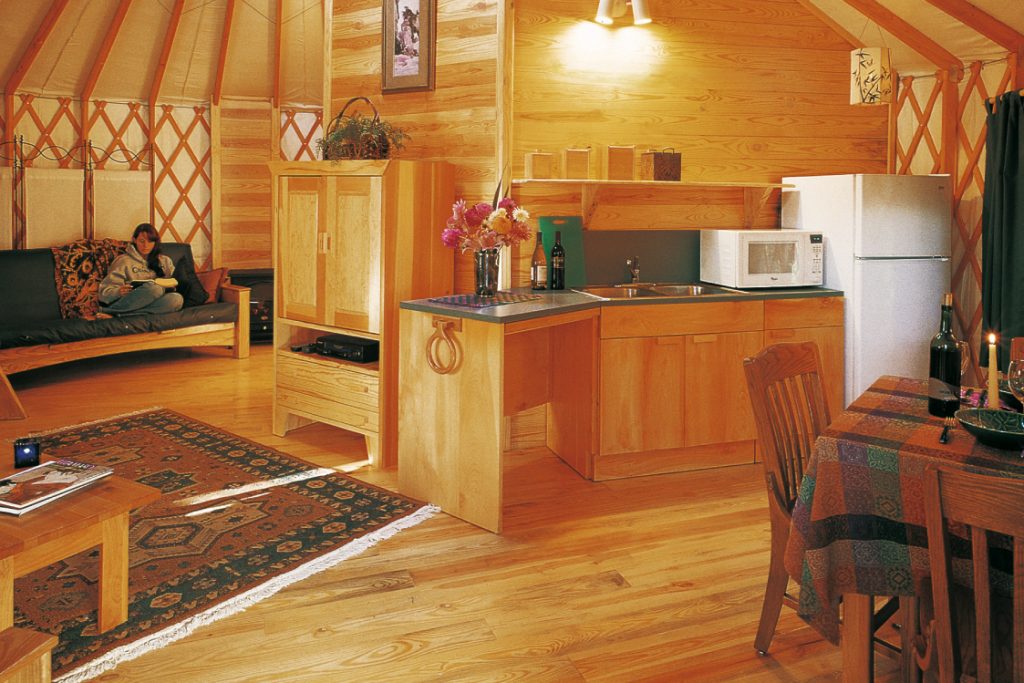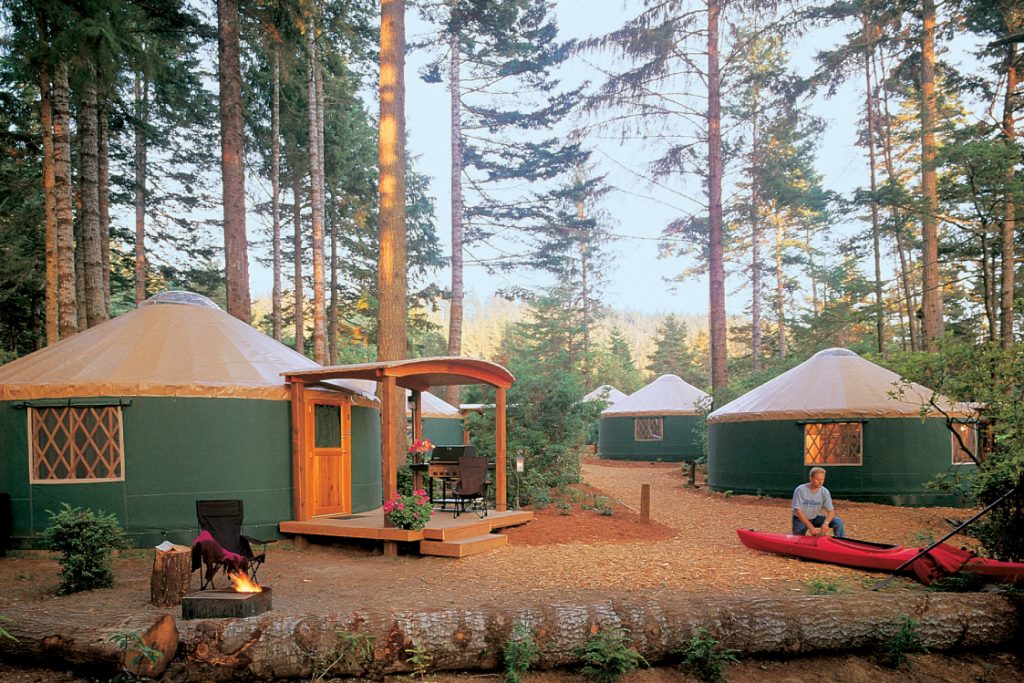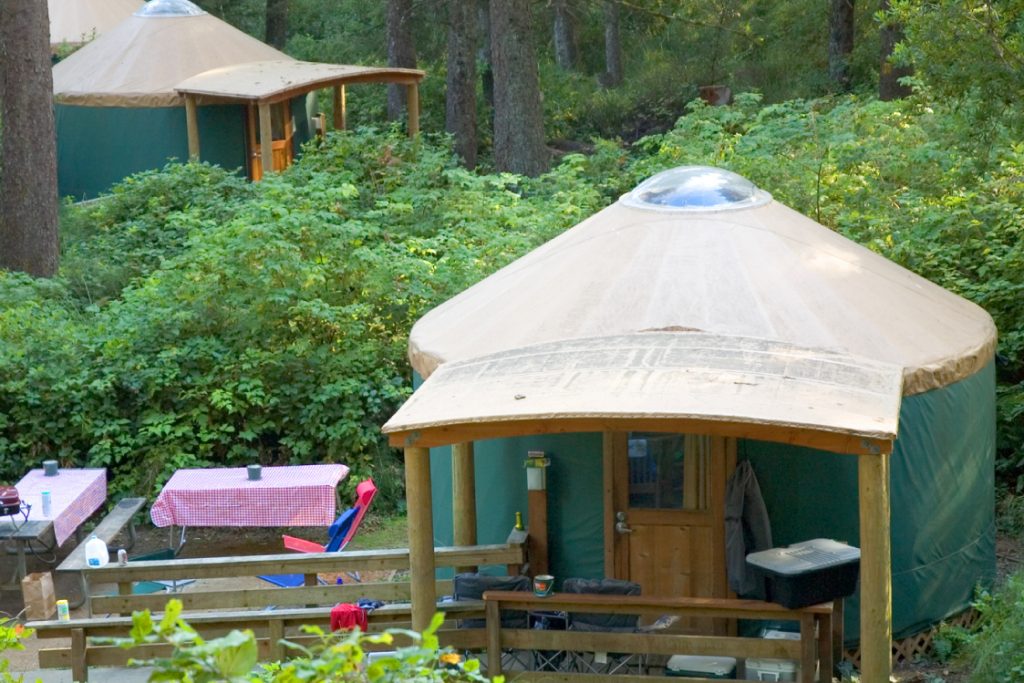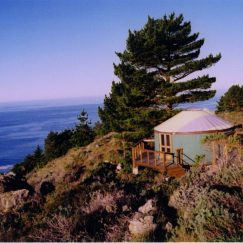Celebrating 30 Years In Oregon State Parks
If you’ve had the privilege of visiting any of Oregon’s 255 state parks over the last few decades, you may have noticed a collection of yurts at their campsites. Today, yurts are a common sighting in Oregon’s state parks, but did you know that Pacific Yurts helped to revitalize the park system in the 90s? In celebration of 30 years of yurts in Oregon’s state parks, we’re heading back in time to reflect on the origin of this natural partnership and looking toward its bright future.
How Pacific Yurts Helped Save Oregon’s Park System

In the early 1990s, the Oregon Parks and Recreation Department was separated from the Oregon Department of Transportation, severing the funds it needed to survive. Without proper resources, maintenance for the parks system was backlogged and Park Director Ben Meinen tasked park managers with finding new revenue streams to help restore the parks to their former standard of care.
In 1993, Craig Tutor, a regional manager on the north coast, saw a Pacific Yurts display at the Oregon State Fair and thought the yurts would be a great alternative to tent camping and address the low park occupancy during Oregon’s rainy winter months. The next spring, Craig and his team tried out two yurts at Cape Lookout State Park and by autumn, 16 yurts were installed at eight state parks along the coast. By 1996, the agency added 50 more and in 1998, due to the increased demand, there were a total of 152 yurts in 19 parks across Oregon. Today, there are over 200 yurts across the entirety of the state park system.
Investing in Quality and Innovation

Because Oregon parks were able to charge more for a yurt stay than for a tent or RV site, the addition of yurts exponentially increased revenue and brought in a whole new glamping clientele. Booking out several months in advance, the success of Pacific Yurts in Oregon state parks has inspired other states to add yurts to their campgrounds as well. By properly maintaining their yurts, the park system has protected their investment, and their yurts have held up for decades amidst the harsh conditions on the Oregon coast.
Over the years, Pacific Yurts has continued to innovate, adding NASA-developed reflective insulation, structural upgrades that meet modern codes, and thermal glass windows in their design, making them even more durable than they were a few decades back. Today’s yurts include a number of standard and additional features like French doors, a dome skylight, a water catchment system, and a window awning frame.
The Growing Demand for Yurt Rentals

It’s not just state parks that have benefited from the addition of yurts to their business model. Private campgrounds and youth camps are also adopting yurts, with many camping sites creating “yurt villages” of different sized yurts to accommodate a variety of group stays. The yurt glamping trend has also taken off, thanks to the rise in eco-tourism and the growing demand for staycations. Yurt glamping in particular offers business owners a higher return on investment than other vacation rentals due to their low startup and maintenance costs.
While largely popular with Millenials and Gen X, yurt camping and glamping also appeal to those who have sold their RV but still want a comfortable camping environment and offer much-appreciated accessibility for wheelchair users. Because of their low impact in environmentally sensitive areas and the portability of yurt kits, yurts are also a great choice for unique natural areas that wouldn’t support other structures.
Stay in a Pacific Yurt in Oregon State Parks
From scenic campgrounds on the coast to sites along the Deschutes or near Crater Lake, there are yurt camping options to discover across Oregon. Use our yurt vacations search tool to start planning your next yurt vacation in Oregon’s State Parks.
